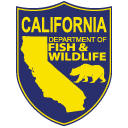
photo ©MarcoMazza, CC BY-NC 2.0
Ventura and Santa Barbara counties are situated north of Los Angeles along the Southern California coastline. Although distinct, these neighboring counties share jurisdiction over an area known as the “Galapagos of North America” – the Northern Channel Islands (NCIs).
The islands were given their nickname due to the diverse and abundant life found there. Supporting thousands of species of marine fish, invertebrates, mammals, and birds, plus more plant and animal species on land, these islands can reward visitors with a glimpse of the untouched California of long ago.

Map by W. McEnery, CDFW GIS Lab
The NCIs, which include San Miguel, Santa Rosa, Santa Cruz, Anacapa, and Santa Barbara islands, are currently home to 13 state-managed and nine federally managed marine protected areas (MPAs), two special closures, a national park, and a national marine sanctuary. With their assortment of designations and protected areas, the NCIs are overseen by multiple state and federal agencies, but the public also has a significant investment in their overall management.
MPA Collaboratives give the public the opportunity to share their knowledge, ideas, and concerns about local MPAs with the managing government agencies. There are currently 14 MPA Collaboratives that make up California’s MPA Collaborative Network. Collaboratives represent coastal counties and offer residents a venue to meet and discuss any topic relating to their local MPAs.

photo by C. Allison, MPA Collaborative Network
Santa Barbara Channel Collaborative (SBCC) members provide input for the 13 island MPAs, as well as five mainland MPAs located along Santa Barbara County’s coast. With 18 MPAs – the greatest number of MPAs in any Collaborative – the SBCC’s unique challenge is to coordinate input and outreach for both mainland and island MPAs. Currently co-chaired by Kristen Hislop from the Environmental Defense Center and Julie Bursek from the Channel Islands National Marine Sanctuary, the SBCC has members from numerous groups including tribes, fishermen, academic and agency partners, as well as nonprofit organizations. This variety of member interests is reflected in the informative materials created by the Collaborative.
 According to Hislop, “The breadth of expertise and interests of our collaborative members has allowed us to better inform a wide range of stakeholders, from boaters, to recreational fishermen, to individuals curious about marine science.” For example, members created a recreation brochure that highlights different ocean businesses in Santa Barbara and Ventura counties, and guides visitors who go to explore the mainland and island MPAs. They also helped to create an exhibit near the University of California, Santa Barbara that highlights kelp forest research within the island MPAs.
According to Hislop, “The breadth of expertise and interests of our collaborative members has allowed us to better inform a wide range of stakeholders, from boaters, to recreational fishermen, to individuals curious about marine science.” For example, members created a recreation brochure that highlights different ocean businesses in Santa Barbara and Ventura counties, and guides visitors who go to explore the mainland and island MPAs. They also helped to create an exhibit near the University of California, Santa Barbara that highlights kelp forest research within the island MPAs.
The SBCC is also invested in spreading awareness of, and learning more about, a fast-growing invasive kelp known as Undaria pinnatifida, commonly called wakame kelp. SBCC members created an informative brochure about the invasive kelp that explains what it is, why it is bad for the local ocean ecosystem, and how to help slow its spread throughout the Santa Barbara Channel.
In addition to the brochure, Bursek shared that several collaborative members are using mini-remotely operated vehicles to determine if this technology can help them to effectively track invasive kelp locations along the coast, including at the NCIs. By monitoring the extent of this invasion, collaborative members are hoping to identify hot spots and help focus outreach and control efforts to prevent the further spread of this invasive kelp species.
 As with all Collaboratives, anyone is welcome to join the SBCC. They are always looking for new ways to connect the local community with the Santa Barbara Channel MPAs, so if you have any ideas or questions about the SBCC, feel free to attend one of their meetings or reach out to one of the co-chairs for more information. If you are interested in joining a different Collaborative, visit the MPA Collaborative Network website to find one near you!
As with all Collaboratives, anyone is welcome to join the SBCC. They are always looking for new ways to connect the local community with the Santa Barbara Channel MPAs, so if you have any ideas or questions about the SBCC, feel free to attend one of their meetings or reach out to one of the co-chairs for more information. If you are interested in joining a different Collaborative, visit the MPA Collaborative Network website to find one near you!
post by Amanda Van Diggelen, CDFW Environmental Scientist
 This article is part of a series featuring California MPA Collaboratives. Read archived MPA News articles and the series Exploring California’s MPAs for more stories and information about California’s marine protected areas!
This article is part of a series featuring California MPA Collaboratives. Read archived MPA News articles and the series Exploring California’s MPAs for more stories and information about California’s marine protected areas!



